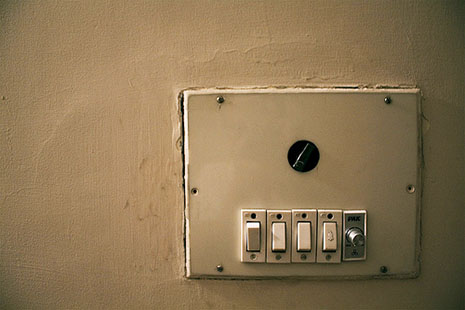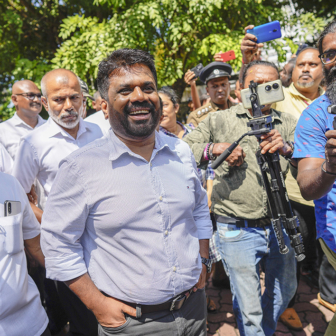BEEP. Beep. I wake up groggily. In my backyard the generator roars to life, purring like a giant lawnmower. I wait for the beeps that indicate generator power is working, then the air conditioner clicks back on and I fall back asleep. It’s two o’clock in the morning.
This is the first hour of “load shedding” for my suburb in Islamabad. Like clockwork, the power will go off again for an hour at 6 am, 10 am, 2 pm, 6 pm and 10 pm. Luckily I have a generator for back-up electricity. Many others are not so fortunate.
In summer, when the temperature sometimes soars to 45 or 50°C, rural areas can be without power for up to twenty hours per day. During winter, gas is rationed. Compressed natural gas, used by many Pakistanis to fuel cars, is heavily rationed year round and only available four days a week. According to the Asian Development Bank, 30 per cent of Pakistanis have no electricity and 80 per cent don’t have access to pipeline gas.
For many, energy shortages and load shedding have become a seemingly permanent feature of life. For shopkeepers, business slows during the hours of the blackout. I remember taking a visiting friend to my favourite carpet shop. As we walked downstairs to look at the stock out the back, I asked the shopkeeper to turn the light on. “Sorry madam,” he said. “No power, come back at four.” I’ve learned to make sure my laptop has enough battery charge, shop when the power will be on, not be on the treadmill when the power switches over (I learned that lesson the hard way), and not expect traffic lights to work or streetlights to be on at night.
Load shedding doesn’t only affect livelihoods, it can be deadly as well. Last month, a labourer suffocated in an elevator when the power went off. Weeks later, a twenty-one-year-old girl, in hospital for a routine appendectomy, went into a coma when the oxygen stopped flowing after the power was cut. Most hospitals routinely experience up to twelve hours of power outages a day. Airports aren’t exempt either. Islamabad International Airport experiences regular power cuts, and during the fifteen seconds or so it takes to switch to back-up power visitors are left to feel their way through the darkness and wonder about lapses in security.
Pakistan is in a fully fledged energy crisis. Electricity cuts have worsened the country’s already woeful export sector and disrupted industrial production. At the same time, higher energy costs and large subsidies have had significant impact on government finances, slowed economic growth and increased inflation. Civil unrest is increasing as business and citizens protest against the government’s inability to provide this basic service to its citizens – especially when Pakistan can produce nuclear weapons and has the seventh-largest army in the world.
Circular debt is crippling the energy sector. Consumers don’t pay their electricity bills; state-owned electricity distributors can’t pay power generation companies and so they can’t pay the oil companies; the oil companies, in turn, can’t pay the refineries, which then can’t pay the oil marketing companies. The debt spirals out of control. In March 2012, Pakistan’s petroleum and natural resources minister reported to the National Assembly that this kind of debt had risen 465 per cent in the four years since the Pakistan People’s Party took office in 2008.
On top of that, the government heavily subsidises the energy sector – to the tune of A$14.9 billion over the past four years. According to a USAID study, reported in Pakistani newspaper Express Tribune using US dollar figures, “Pakistan is facing distribution losses of $7 million per day and the amount of subsidies in the power sector stands at $4 million per day [and] circular debt is increasing $6 to $8 million per day. Pakistan’s economy is facing a loss of $15 million to $20 million per day due to energy shortages.” That is a serious chunk of Pakistan’s budget.
So what is the government doing about this crisis? Many would argue, not much. The Pakistan People’s Party held a national energy conference in April 2012 to address the crisis. Short-term measures announced to deal with the power deficit – standing at approximately 4500 megawatts per day – included instituting a five-day working week at government offices, rather than the official six days (conserving 700 megawatts); closing commercial centres at 8 pm, except on Saturdays; cutting the power supply to neon signs and billboards (saving 250 megawatts); switching off alternate traffic lights; paying unpaid bills owed by the federal and provincial governments; and amending the Electricity Act to eliminate power theft by increasing the maximum punishment.
Businesspeople and shopkeepers throughout the country protested en masse following the announcement of shorter trading hours, complaining that people only shop after sunset in summer because it is so hot. The other measures are unlikely to have a lasting or sustainable impact. The majority of the time, streetlights are not on anyway; and it seems self-evident that the government should stop contributing to the circular debt problem and pay its electricity bills on time. If the Electricity Act doesn’t already prevent power theft, why has it only been discovered now?
What about the longer-term measures discussed at the conference? Unfortunately, the majority of these, too, are unlikely to have a transformational (or timely) effect. The measures included initiating new hydropower projects, encouraging private-sector investment in energy projects, introducing uniform power supply arrangements throughout the country (to share the load shedding burden), and promoting alternative energy.
It’s hard to see a concrete, comprehensive strategy emerging from these decisions. Investment in Pakistan, from both domestic and foreign companies, is low. The security situation, regulatory environment and risks involved have significantly hampered government attempts to bring business back to Pakistan.
Pakistan must introduce a series of reforms to overcome the crisis. The international donor community, including the international financial institutions, have provided technical and financial assistance to get the ball rolling, but this has yet to yield significant results.
Instead, Pakistan’s patronage machine has ploughed onwards, allowing the powerful to buy their way out of the reform process. Just a few weeks ago, Dawn newspaper reported that a public rally held by Pakistan Muslim League–Nawaz was powered by electricity siphoned illegally from a high-voltage overhead transmission line. If rich politicians won’t pay for power, why should the poor? •




